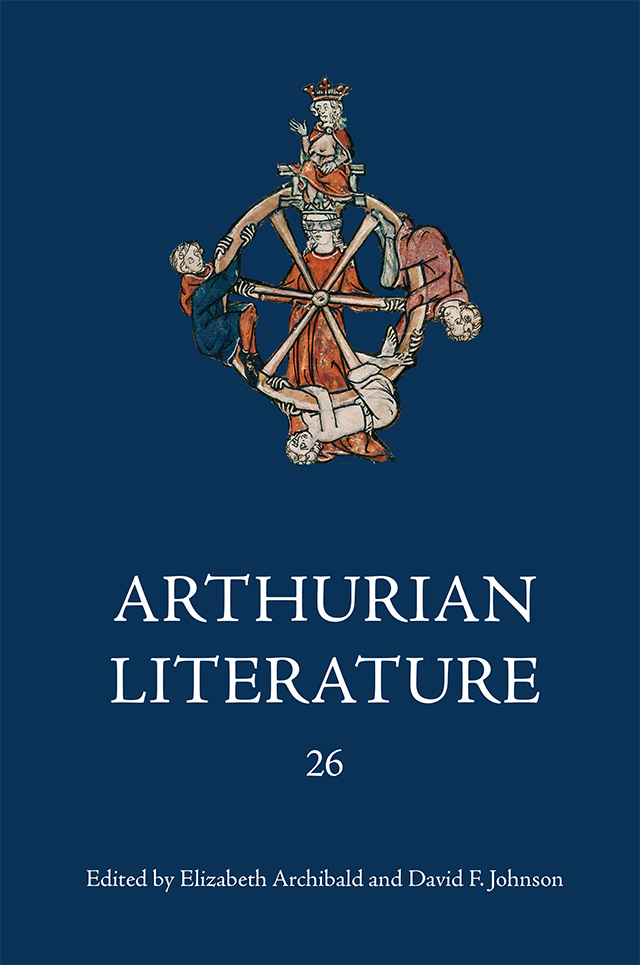Book contents
- Frontmatter
- Contents
- General Editors’ Foreword
- Contributors
- Introduction to The Morte Darthur, Parts 7 and 8
- Malory’s Text of the Suite du Merlin
- Why Arthur at All? The Dubious Arthuricity of Arthur and Gorlagon
- The Aesthetics of Communication: Sterility and Fertility in the Conte del Graal Cycle
- ‘Whyche Thyng Semeth Not to Agree With Other Histories ...’: Rome in Geoffrey of Monmouth and his Early Modern Readers
- Arthurian Texts in their Historical and Social Context
- The Post-Christian Arthur
- The Arthurian Legend in Literature, Popular Culture and the Performing Arts, 2004–2008
The Post-Christian Arthur
Published online by Cambridge University Press: 02 March 2023
- Frontmatter
- Contents
- General Editors’ Foreword
- Contributors
- Introduction to The Morte Darthur, Parts 7 and 8
- Malory’s Text of the Suite du Merlin
- Why Arthur at All? The Dubious Arthuricity of Arthur and Gorlagon
- The Aesthetics of Communication: Sterility and Fertility in the Conte del Graal Cycle
- ‘Whyche Thyng Semeth Not to Agree With Other Histories ...’: Rome in Geoffrey of Monmouth and his Early Modern Readers
- Arthurian Texts in their Historical and Social Context
- The Post-Christian Arthur
- The Arthurian Legend in Literature, Popular Culture and the Performing Arts, 2004–2008
Summary
For most of his literary career, Arthur has been the Christian hero of a Christian people, and this role has taken two different forms. The first is that in which he appears in his earliest recorded personification, as the champion of the post-Roman British against heathen Anglo-Saxon invaders. It features in the earliest known source to mention him, the ninth-century Historia Brittonum, where he fights bearing the image of the Virgin Mary, and is found, on and off, into the mid twentieth century, where it is the theme of John Masefield's novel, The Badon Parchments. The second form is that of the romances which survive from the twelfth century onward, in which he presides over a conventionally pious high medieval society, in which heroic activity is transferred from Saxonslaying to individual knightly quests, above all that for the Grail. This too has a long pedigree, from the stories of Chrétien de Troyes to the novels of T. H. White and the poetry of Charles Williams in the 1930s and 1940s. Nor has either tradition died out. Since 1960, the high medieval Christian king has appeared in a wholly traditional form in the novels of Jim Hunter, Robert Nye and Kevin Crossley-Holland, and the fighter against the Anglo-Saxon heathen in those of J. T. Haar, John Emlyn Edwards and Anne McCaffrey. Other recent fictional works which deal with Arthur, such as those of Joan Wolf, Elizabeth E. Wein, Jack Whyte and Nancy Stringer, have chosen to ignore the issue of religion altogether.
On the other hand, even when all these authors are grouped together, they are greatly outnumbered by those who, over the same period, have introduced a new factor into the legend, making Arthur the ruler of a British society that is itself deeply divided between Christian and pagan. This clash or reconciliation of rival faiths is turned in these other books into a major theme of their stories, and dealing with it into an important function of Arthur's kingship, in which, according to the tale, he either fails or excels. The same element has entered cinematic depictions of the king in the same period. Some attention has been drawn to it by other scholars, notably Dan Nastali and John Marino.
- Type
- Chapter
- Information
- Arthurian Literature , pp. 149 - 170Publisher: Boydell & BrewerPrint publication year: 2009
- 1
- Cited by

